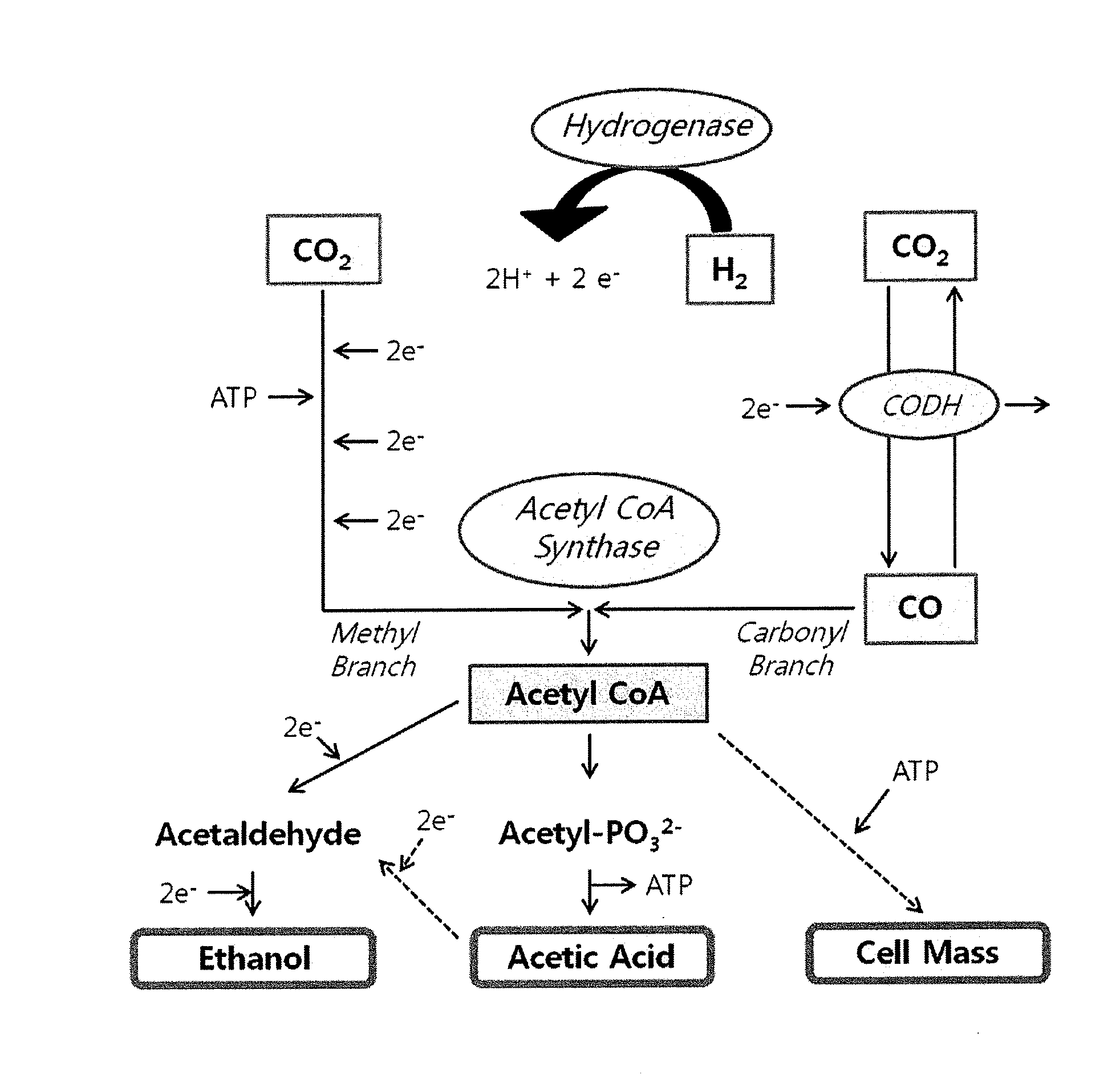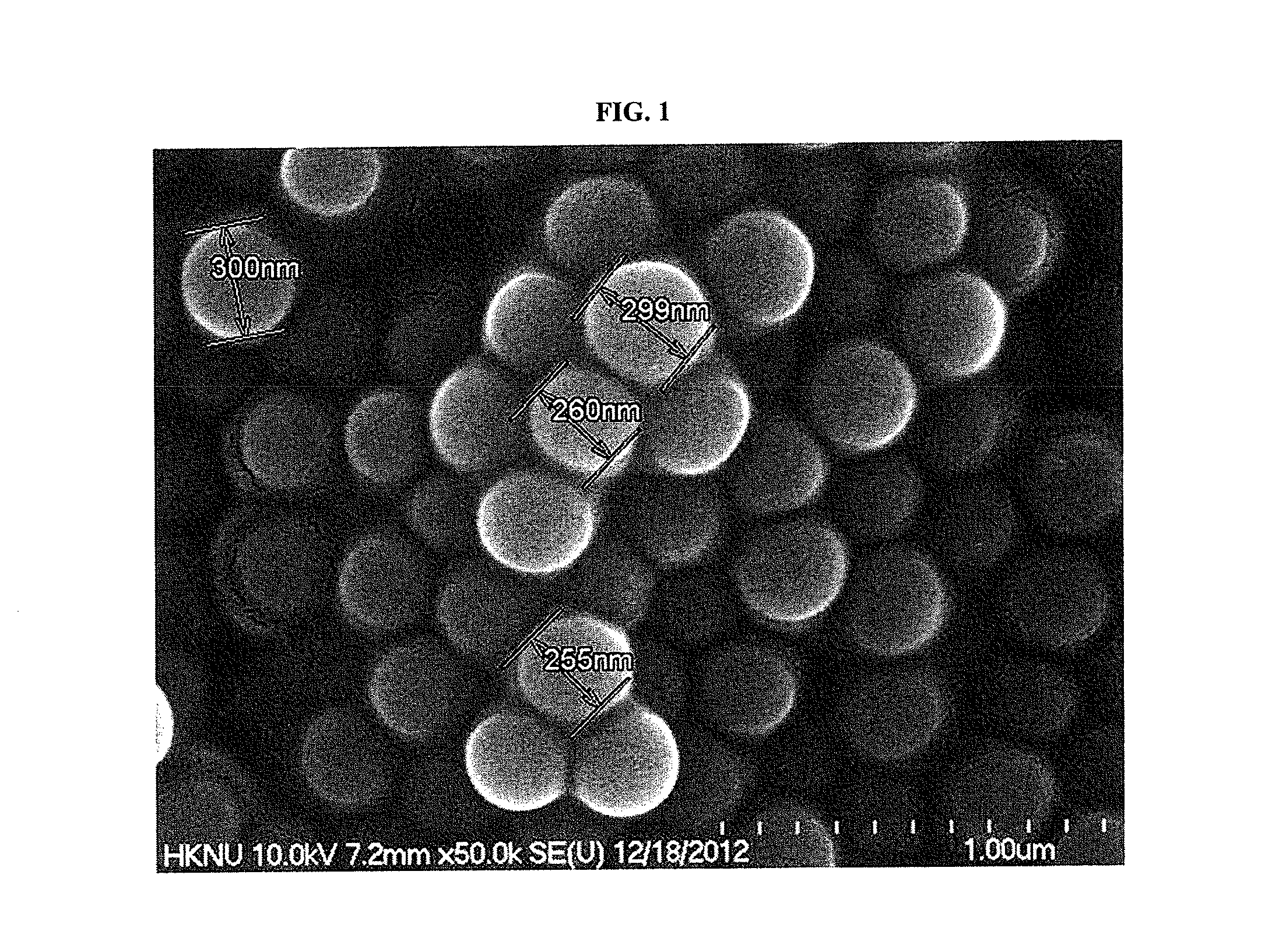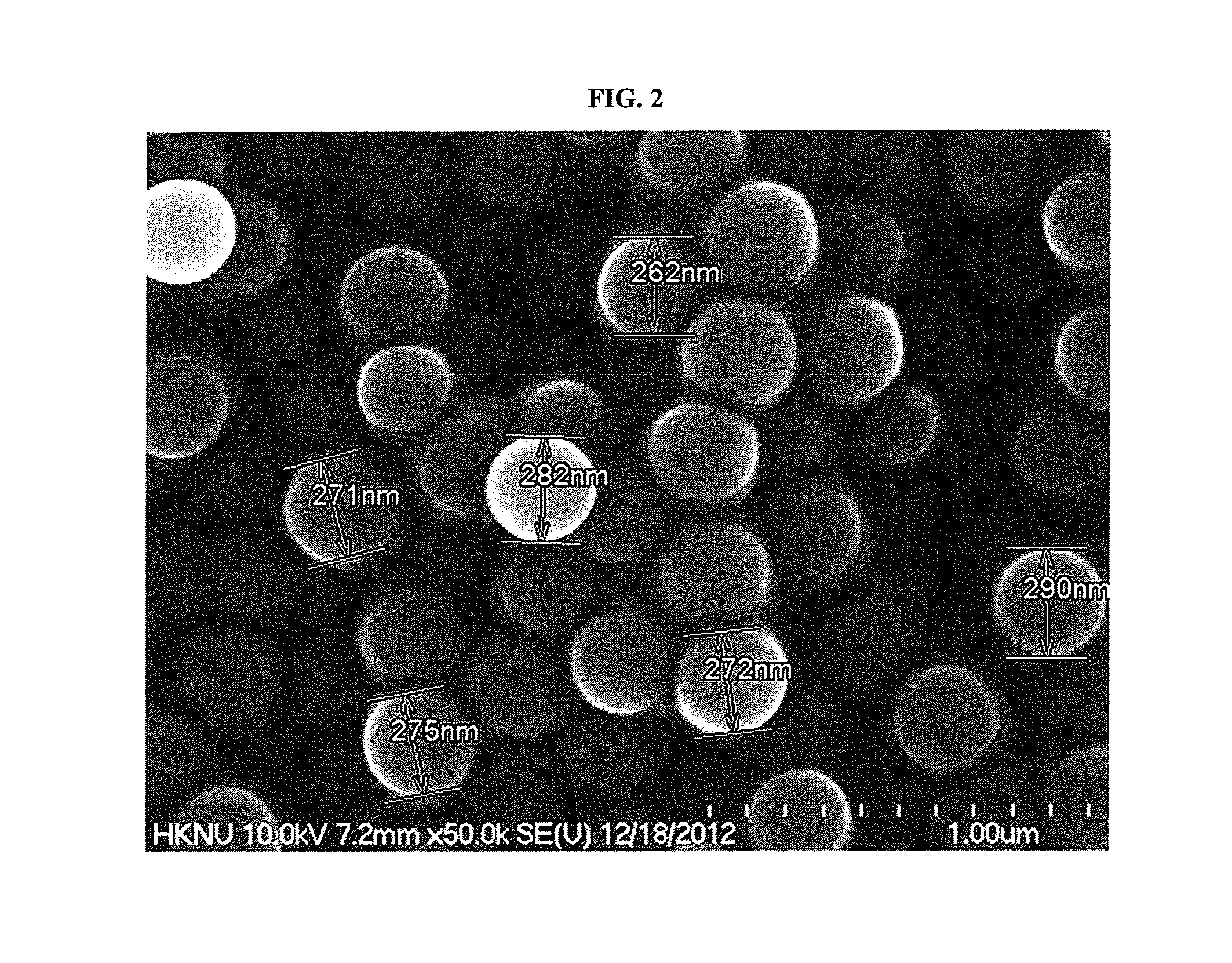Method for producing bio-alcohol using nanoparticles
a nanoparticle and bioalcohol technology, applied in the direction of biofuels, silicon organic compounds, organic chemistry, etc., can solve the problems of difficult for microorganisms to utilize carbon monoxide, carbon dioxide, hydrogen as main substrates for biological conversion, and disadvantages of the saccharification-fermentation process in time and cost, so as to improve the mass transfer of individual gas substrates and enhance the yield of bioalcohol
- Summary
- Abstract
- Description
- Claims
- Application Information
AI Technical Summary
Benefits of technology
Problems solved by technology
Method used
Image
Examples
experimental example 1
Measurement of Carbon Dioxide Solubilities According to Kind of Nanoparticles
1) Experimental Method
[0038]An experimental apparatus for testing the mass transfer of syngas was prepared as follows. First, a 250 ml bottle was filled with 200 ml of distilled water, and then nitrogen gas was injected thereinto to create an oxygen-free environment. Syngas was injected into the bottle until the internal pressure reached 1.2 atm, and the inlet was closed to prevent gas leakage. After stirring with a magnetic bar at a rate of 200 rpm for 5, 10, 15, 20, 25, and 30 min, the concentrations of the syngas in the distilled water at the different times were analyzed to observe dissolution rates. Despite attempts to analyze the concentrations of the gas dissolved in the water according to stirring times, it was difficult to directly measure the gas concentrations because the gas was dissolved at very low concentrations in the water. The vapor-phase gas in the experimental apparatus was collected in ...
example 1
Preparation of Silica Nanoparticles Having Surface Modified with Methyl Groups 1
[0042]To 1 g of the silica nanoparticles of Preparative Example 1 were added 405 ml of a 95% (v / v) ethanol aqueous solution (ethanol:water=95:5, density 0.8 g / ml) and 45 ml of triethoxymethylsilane (density 0.9 g / ml). The mixture was stirred with a magnetic bar for 12 hr. Thereafter, the reaction mixture was washed with ethanol and dried at 80° C. for 1.5 hr, affording silica nanoparticles having surface modified with methyl groups.
[0043]A scanning electron microscopy (SEM) image of the silica nanoparticles having surface modified with methyl groups is shown in FIG. 2. The silica nanoparticles had a particle size of 262-290 nm with an average particle size of 276 nm.
example 2
Preparation of Silica Nanoparticles Having Surface Modified with Methyl Groups 2
[0044]Silica nanoparticles having surface modified with methyl groups were prepared in the same manner as in Example 1, except that 360 ml of a 95% (v / v) ethanol aqueous solution and 90 ml of triethoxymethylsilane were added.
PUM
| Property | Measurement | Unit |
|---|---|---|
| particle size | aaaaa | aaaaa |
| particle size | aaaaa | aaaaa |
| particle size | aaaaa | aaaaa |
Abstract
Description
Claims
Application Information
 Login to View More
Login to View More - R&D
- Intellectual Property
- Life Sciences
- Materials
- Tech Scout
- Unparalleled Data Quality
- Higher Quality Content
- 60% Fewer Hallucinations
Browse by: Latest US Patents, China's latest patents, Technical Efficacy Thesaurus, Application Domain, Technology Topic, Popular Technical Reports.
© 2025 PatSnap. All rights reserved.Legal|Privacy policy|Modern Slavery Act Transparency Statement|Sitemap|About US| Contact US: help@patsnap.com



